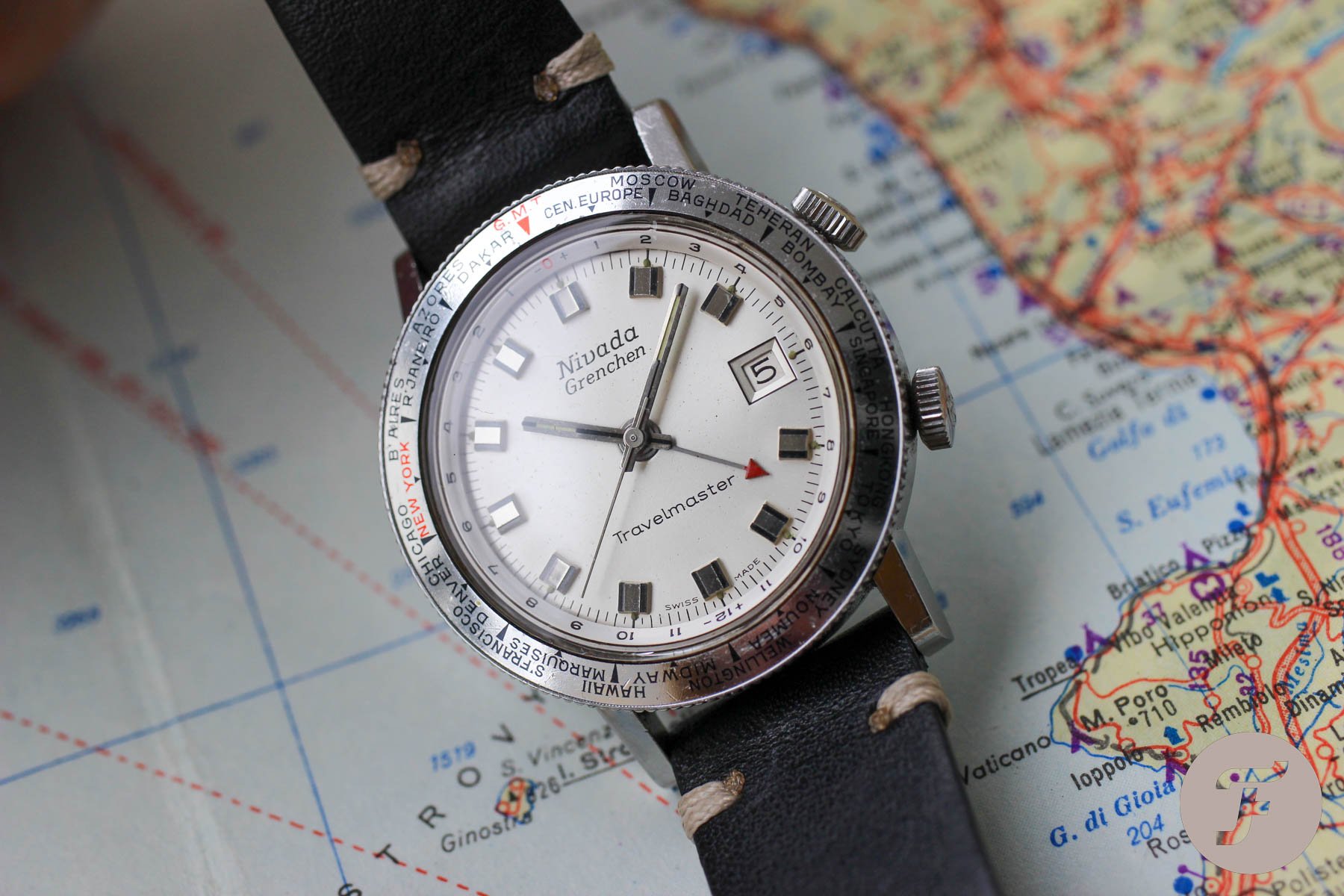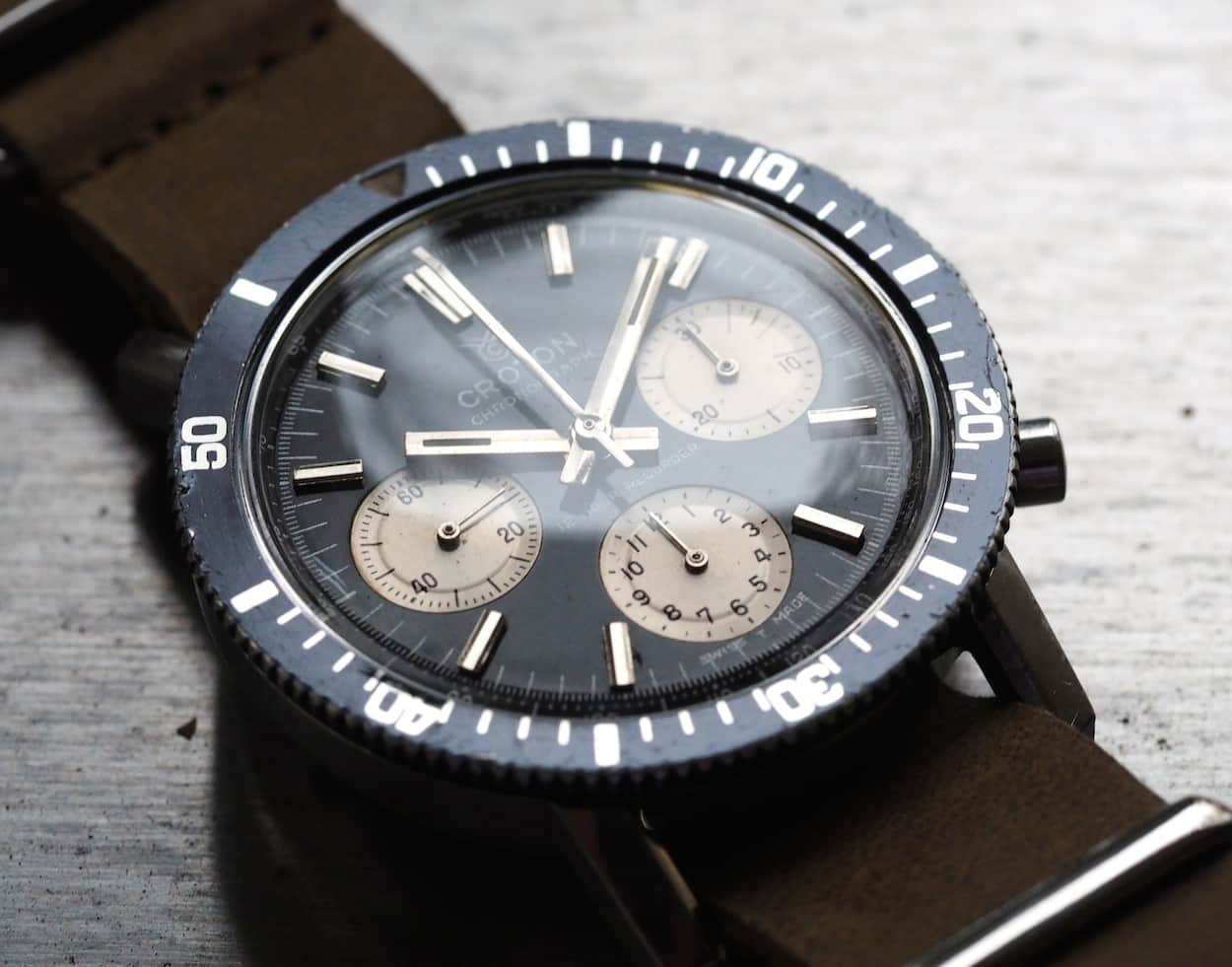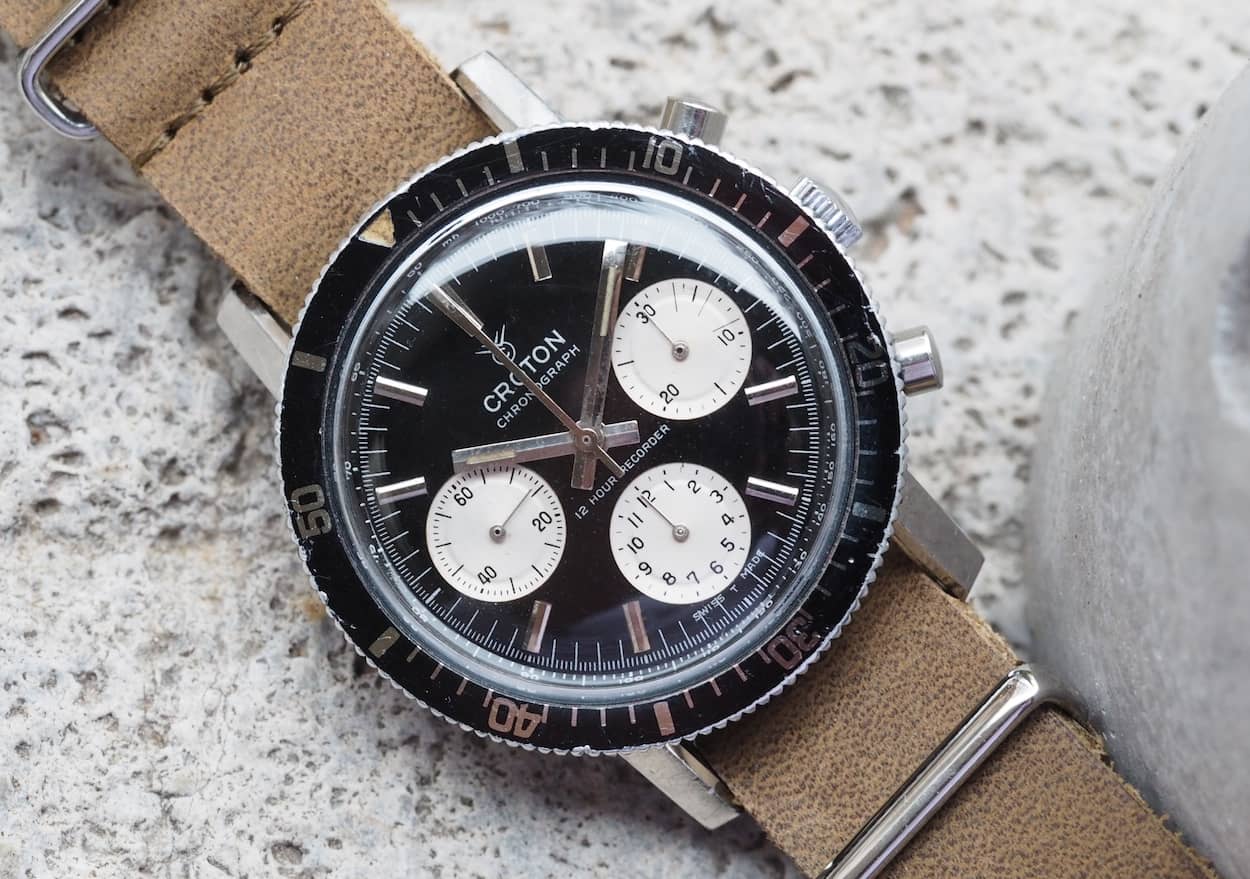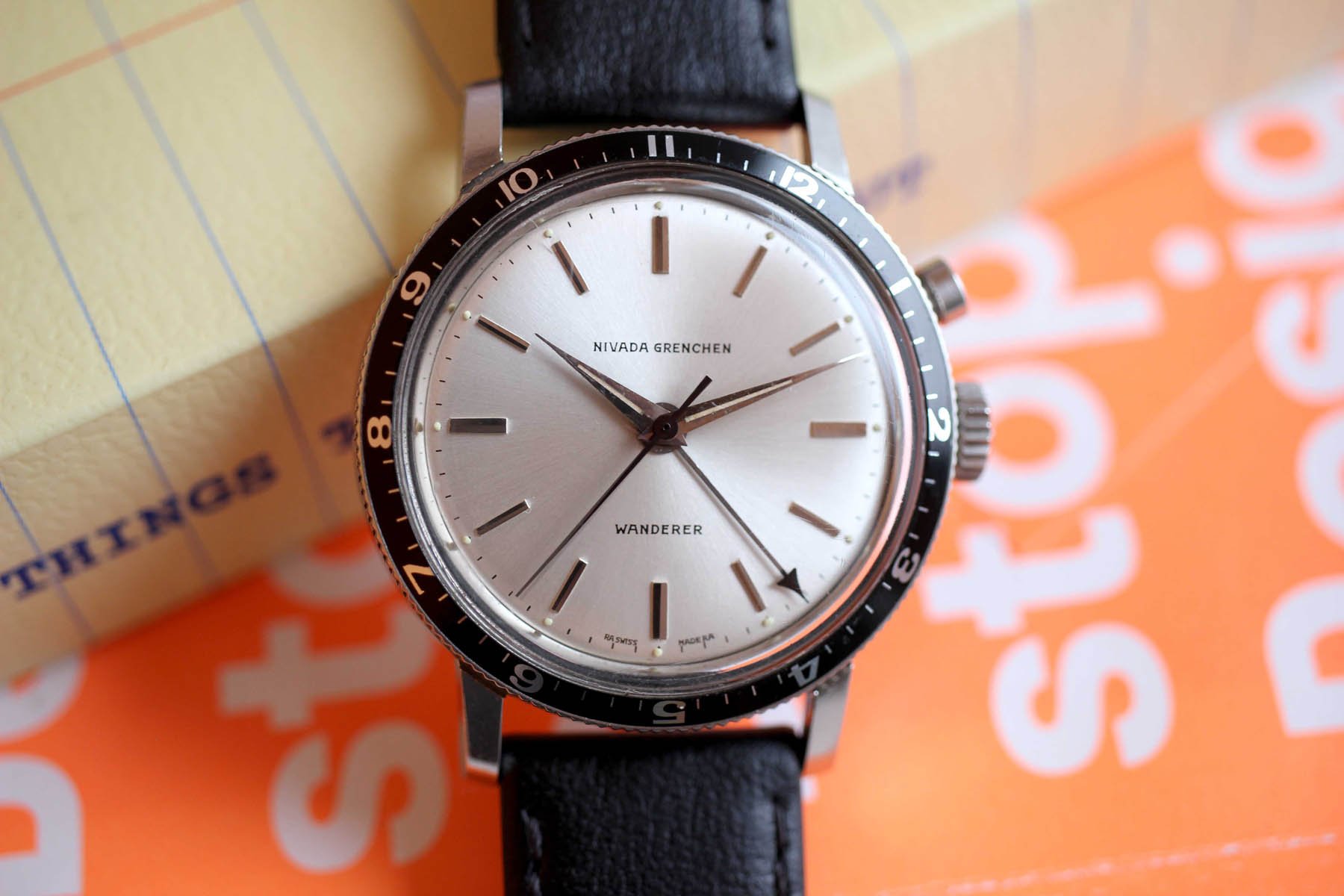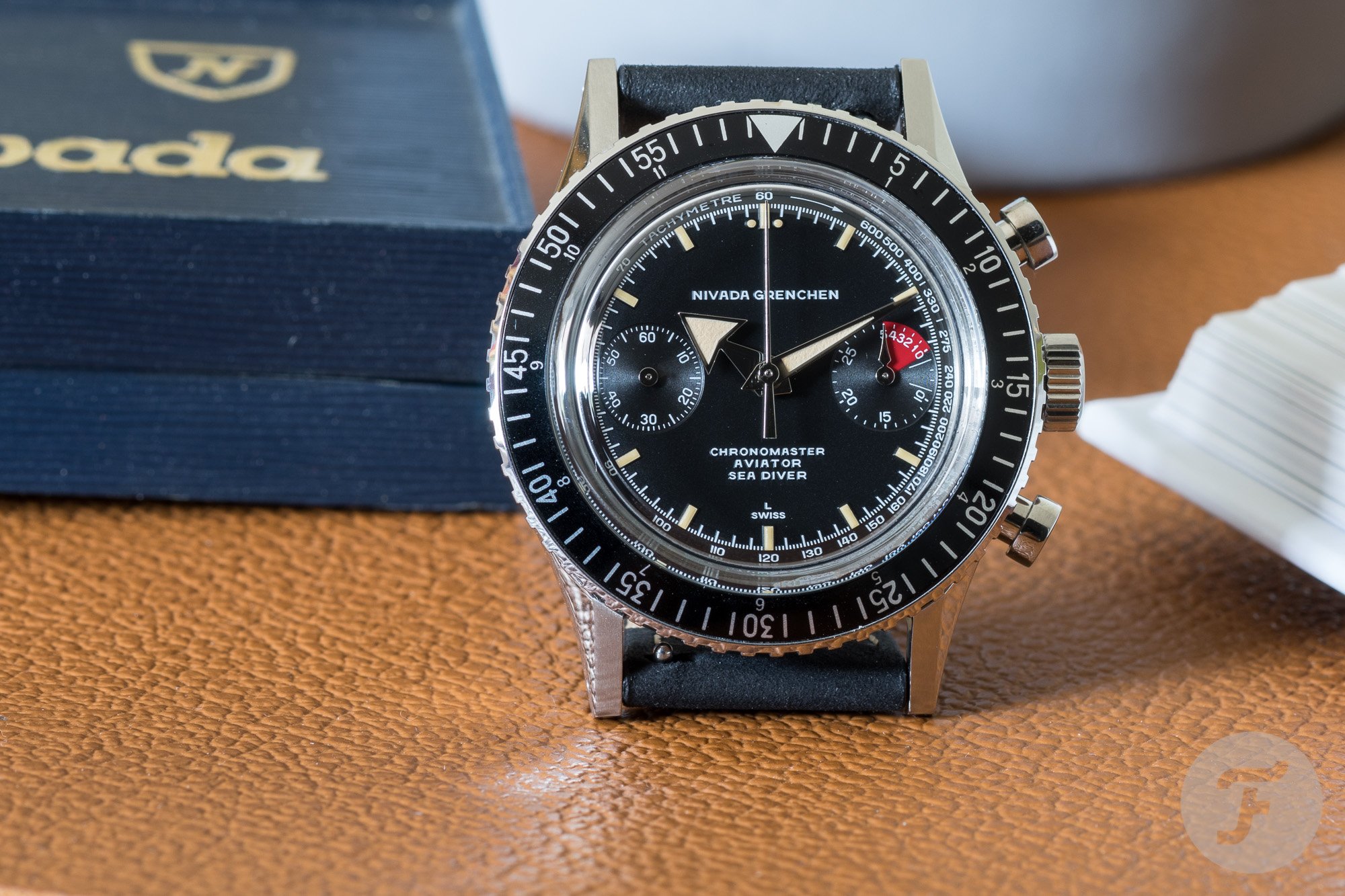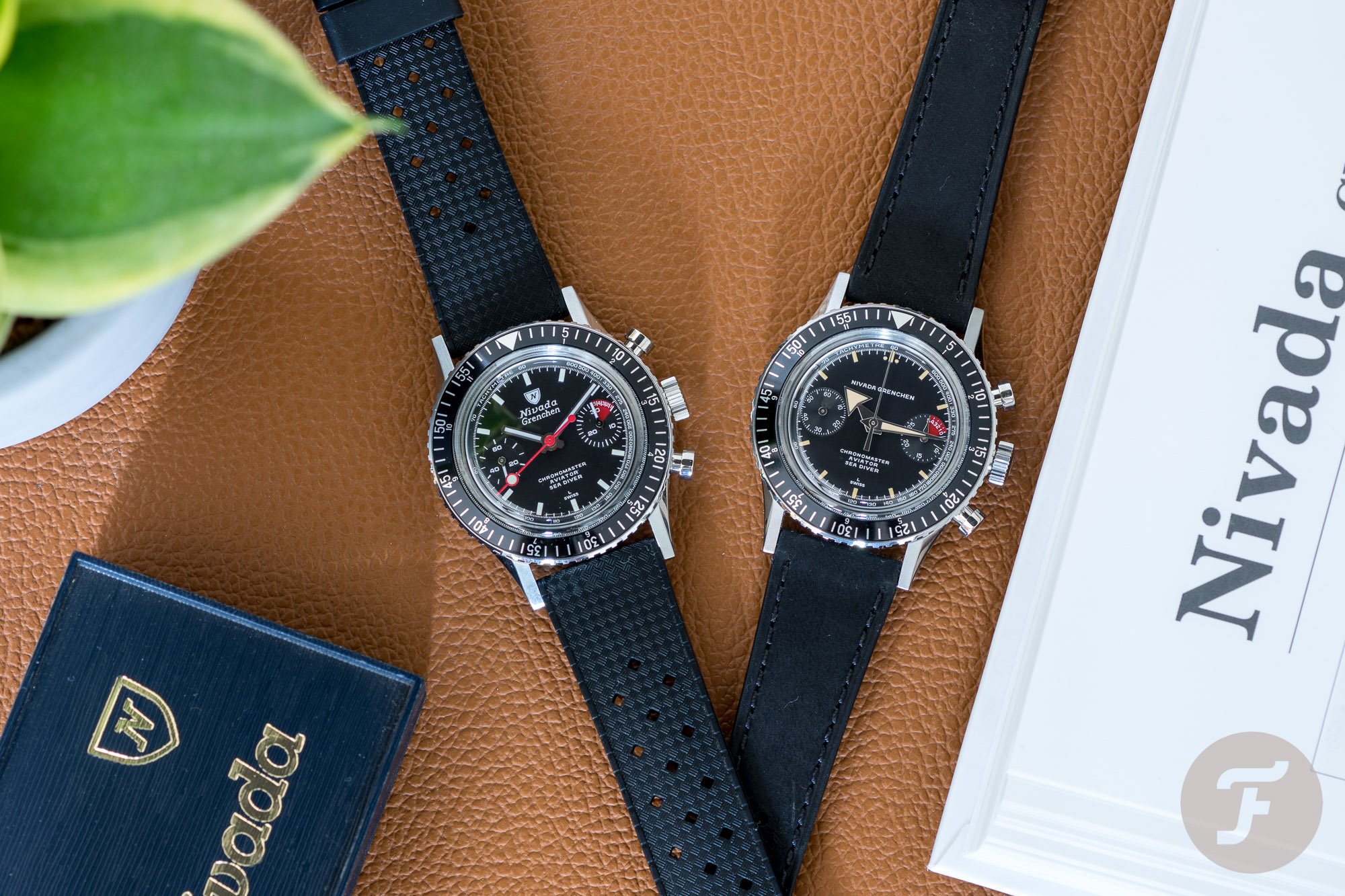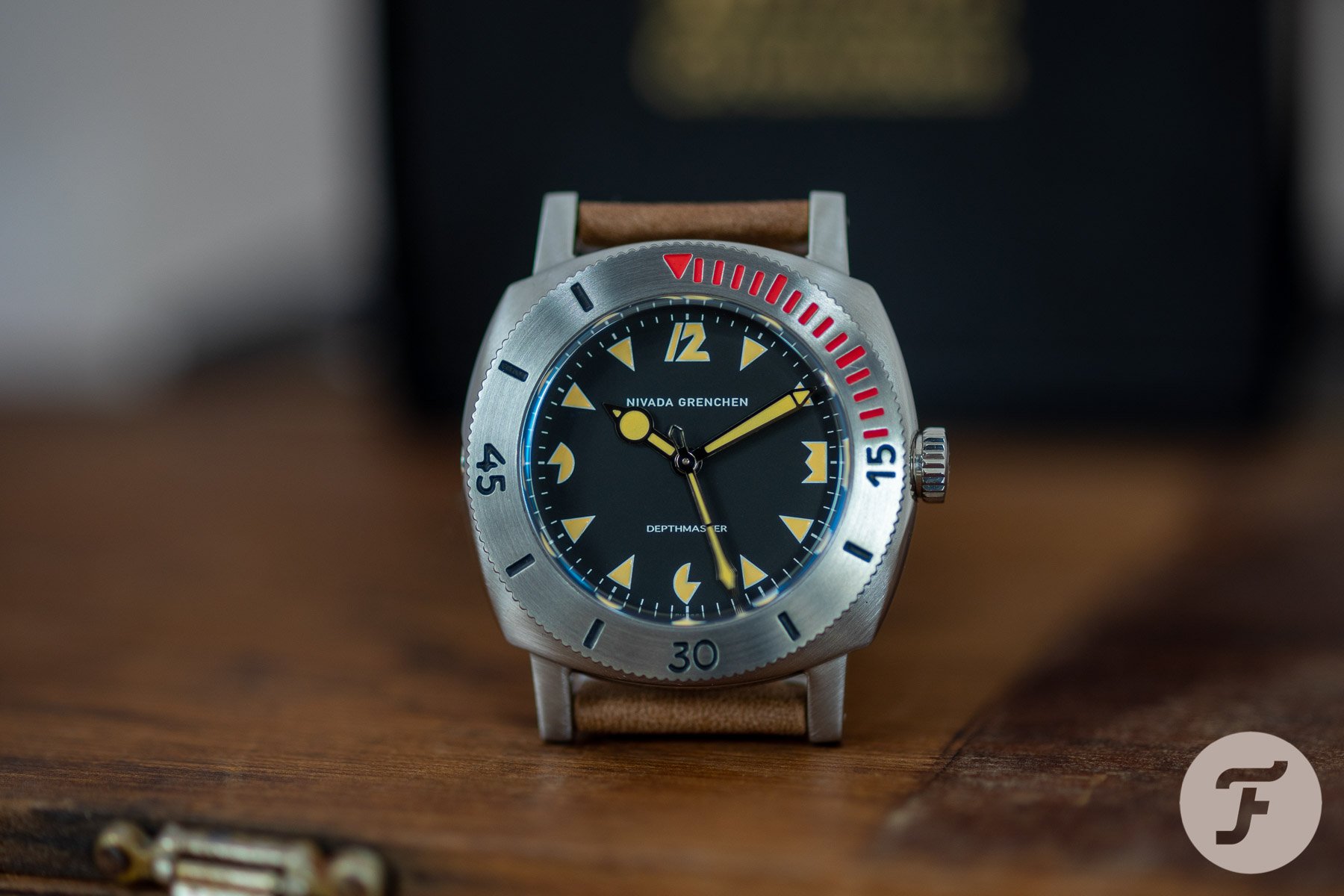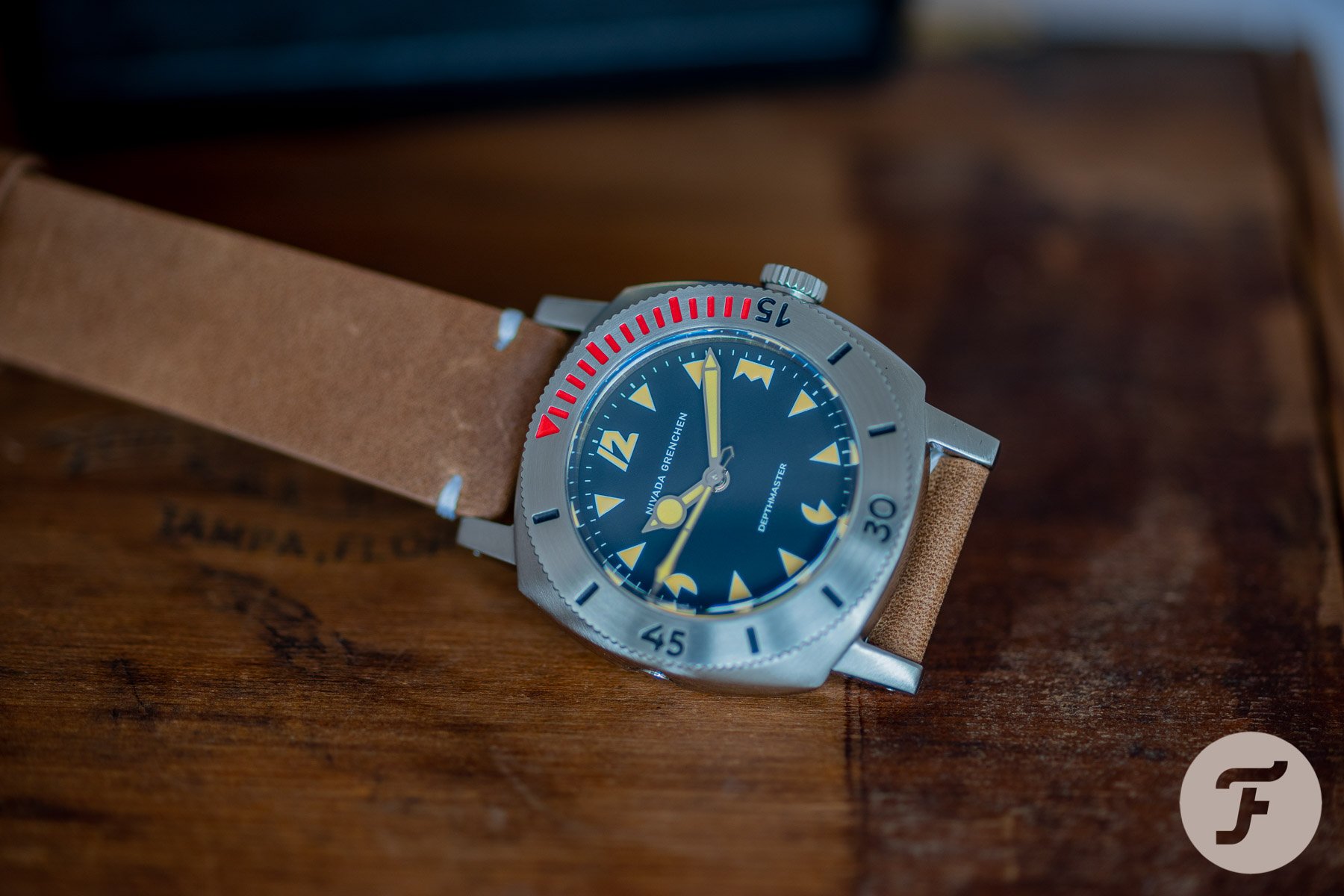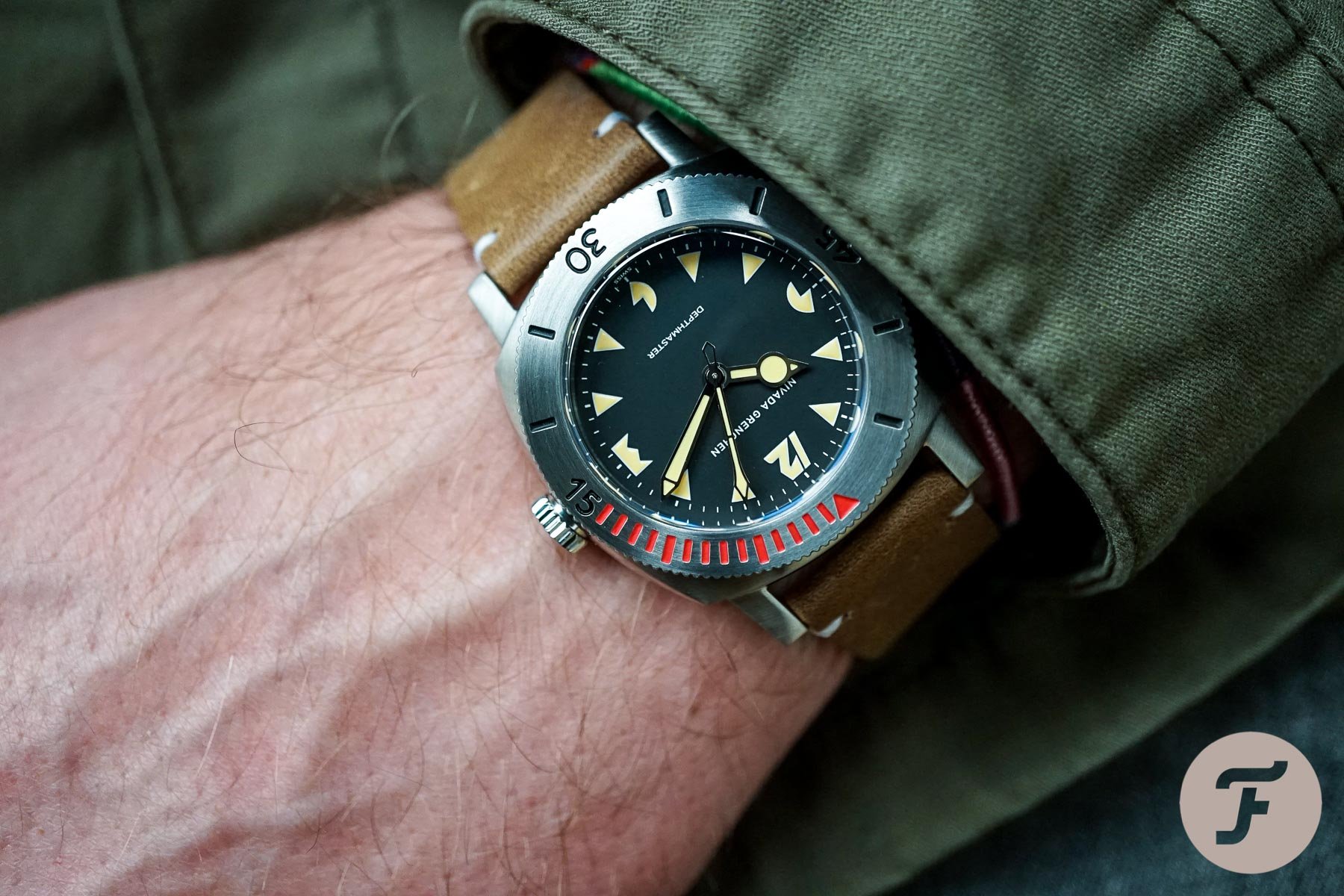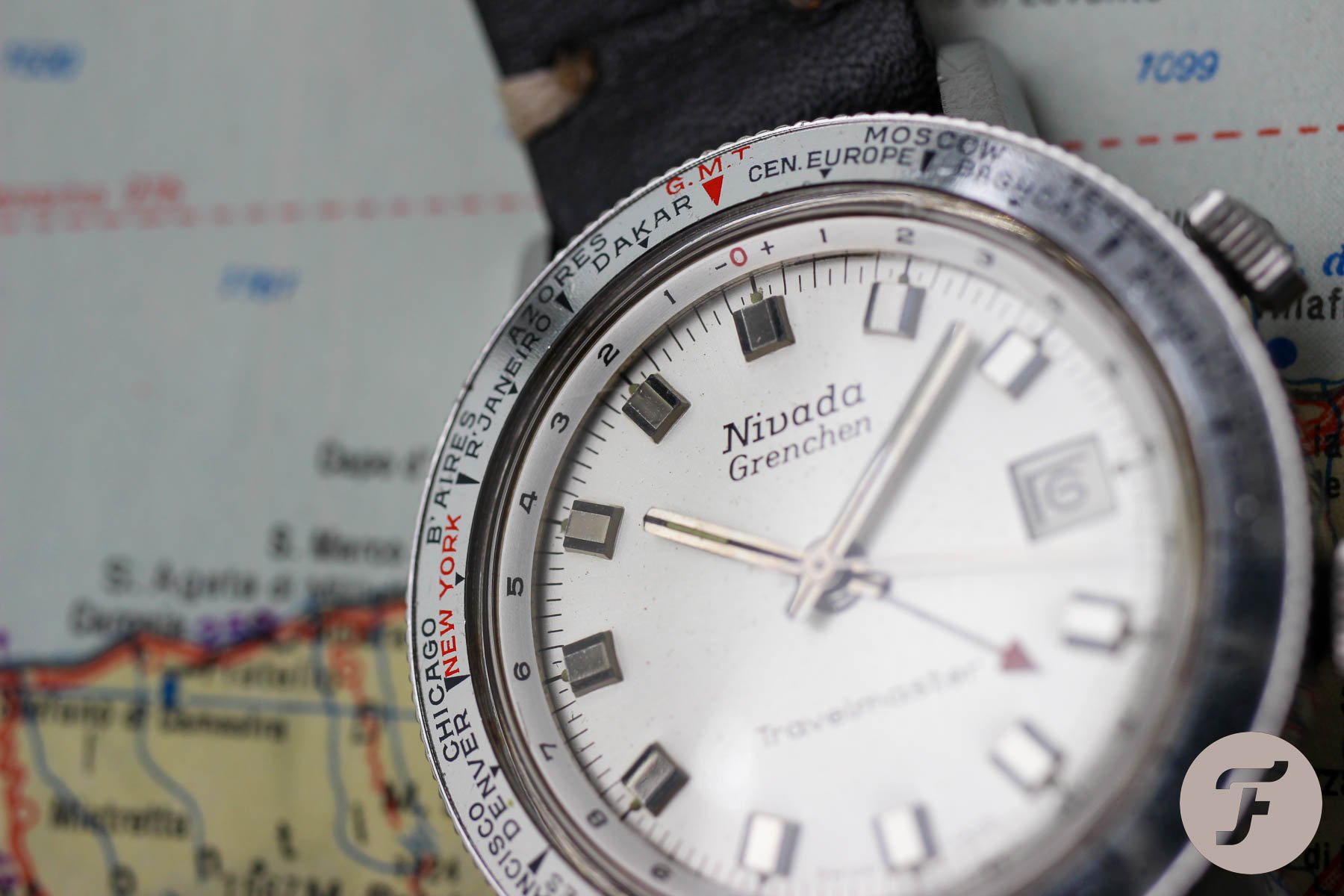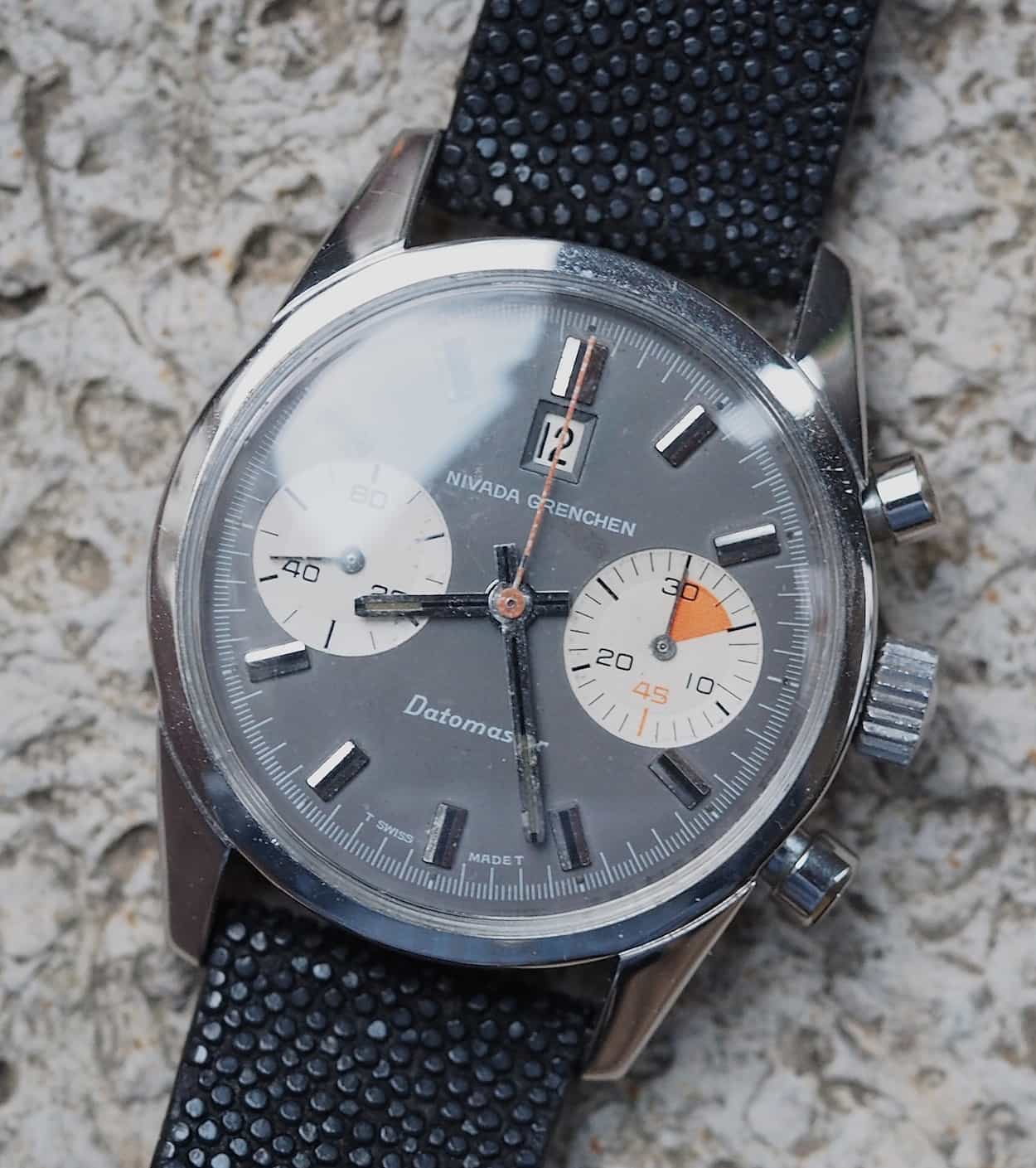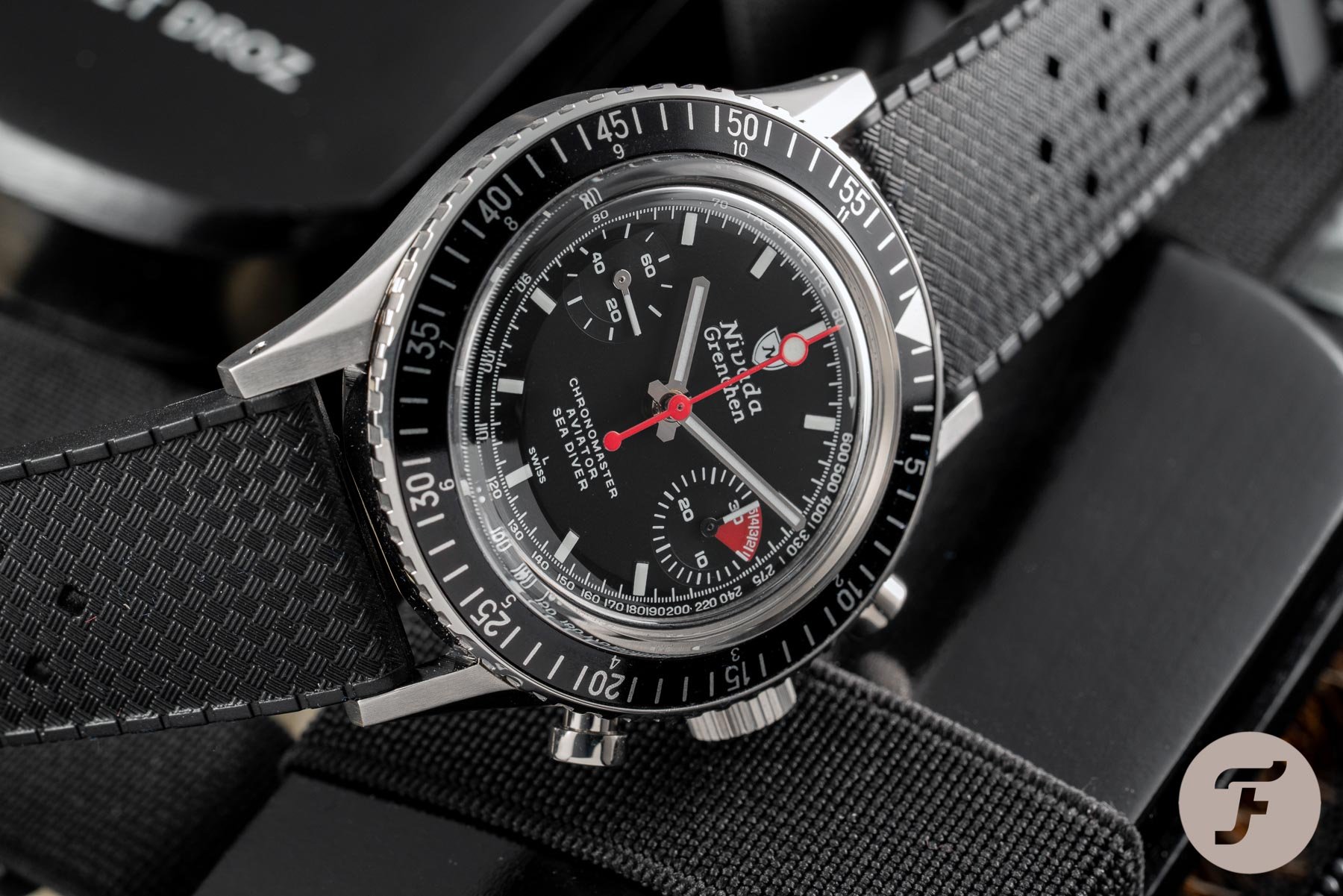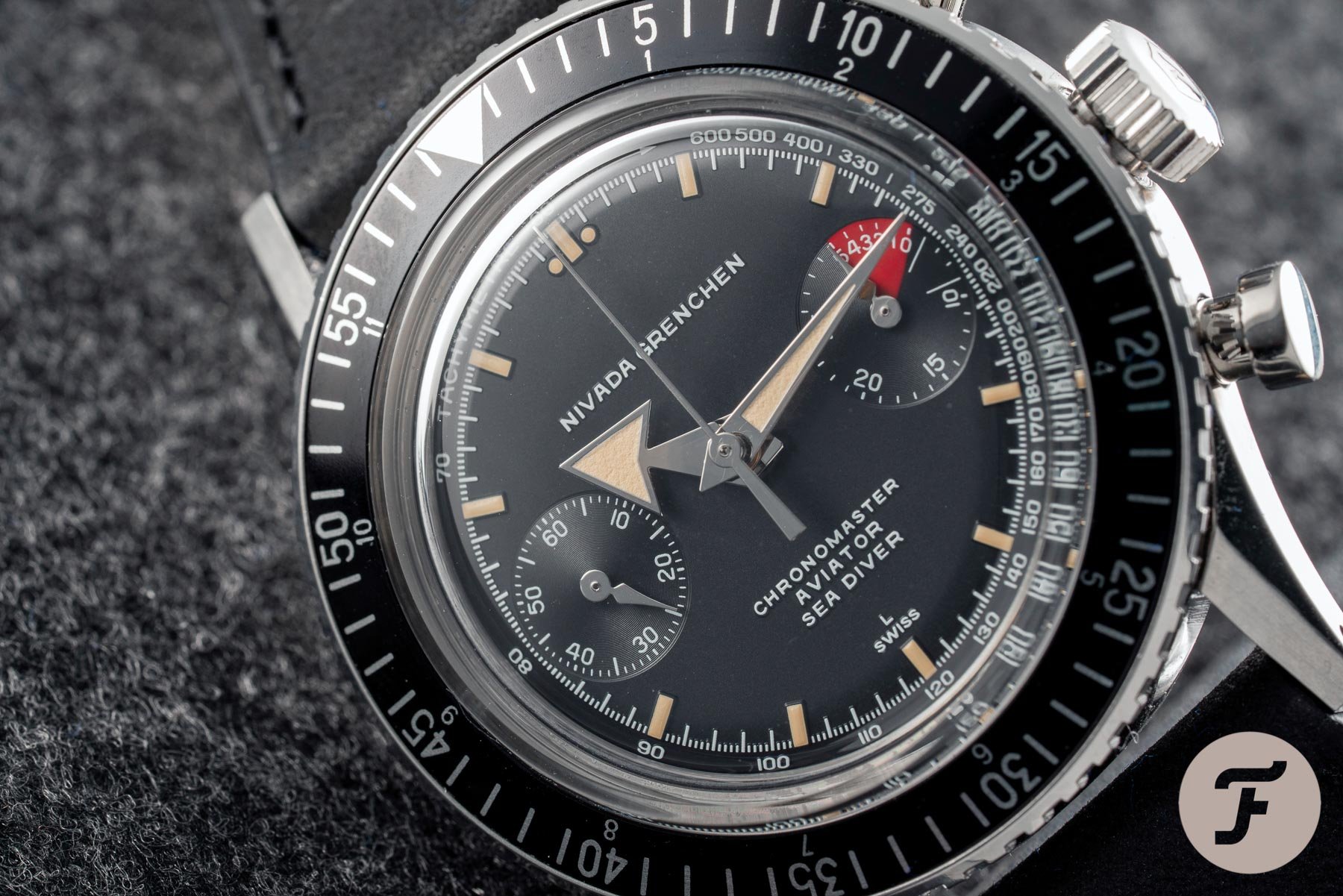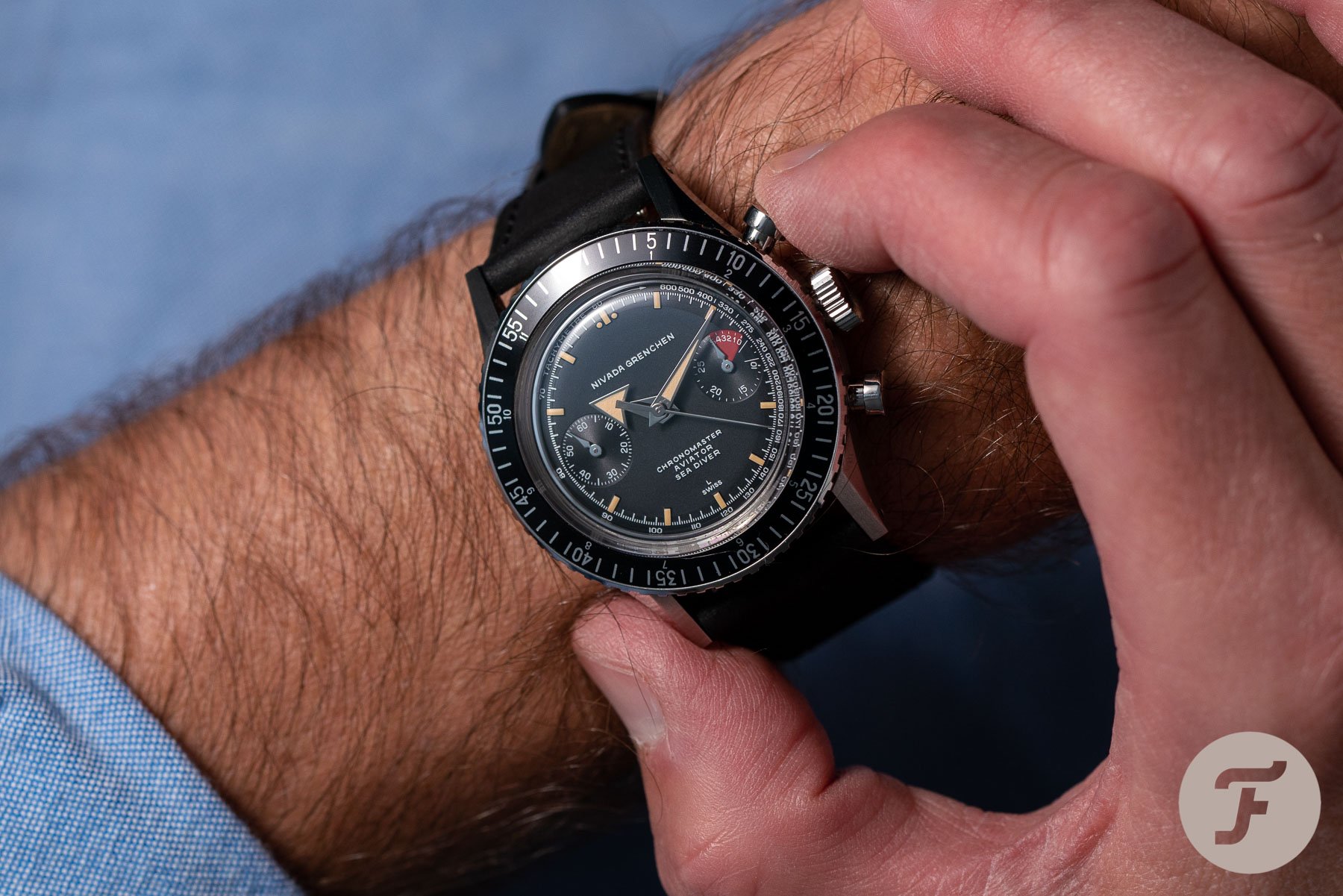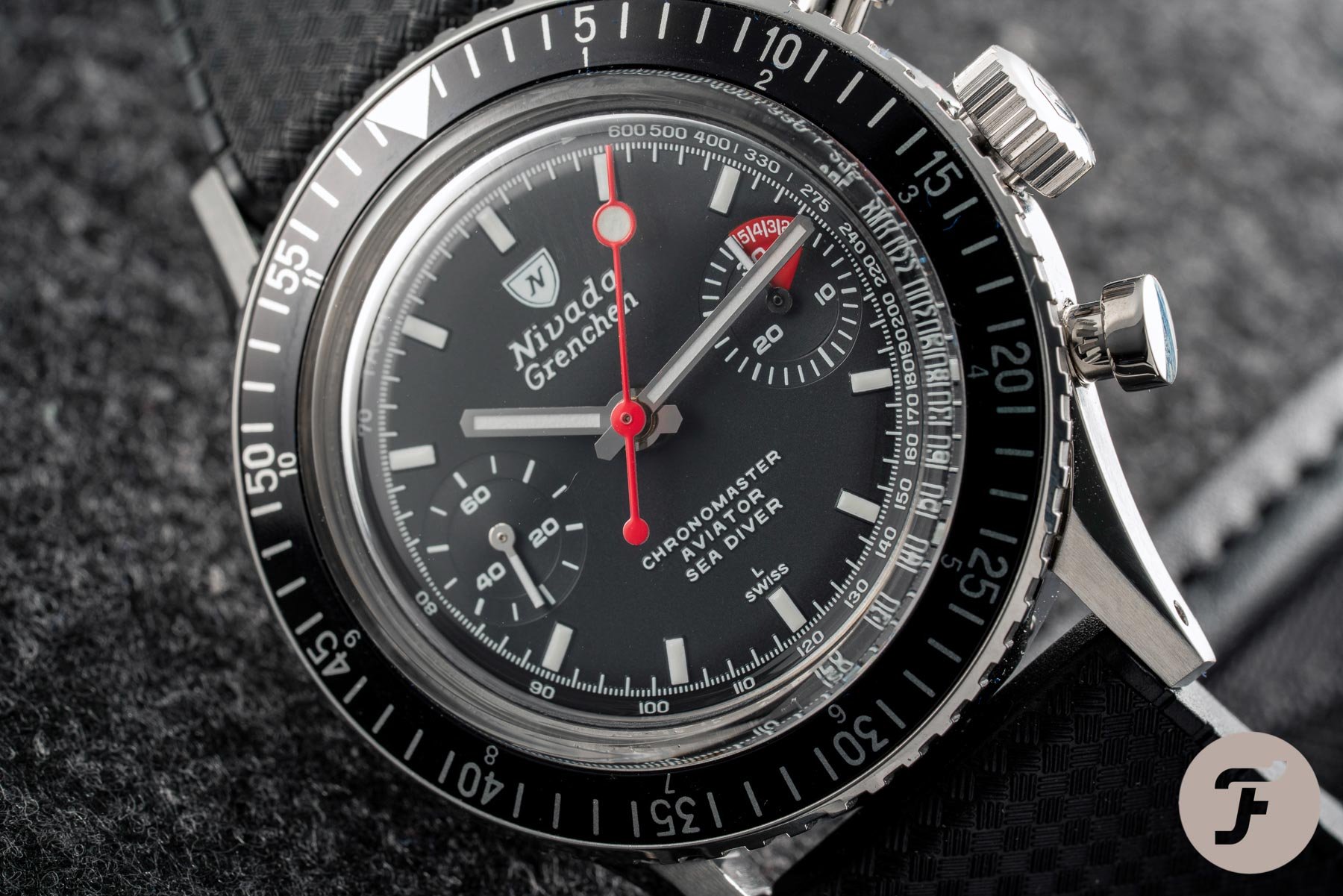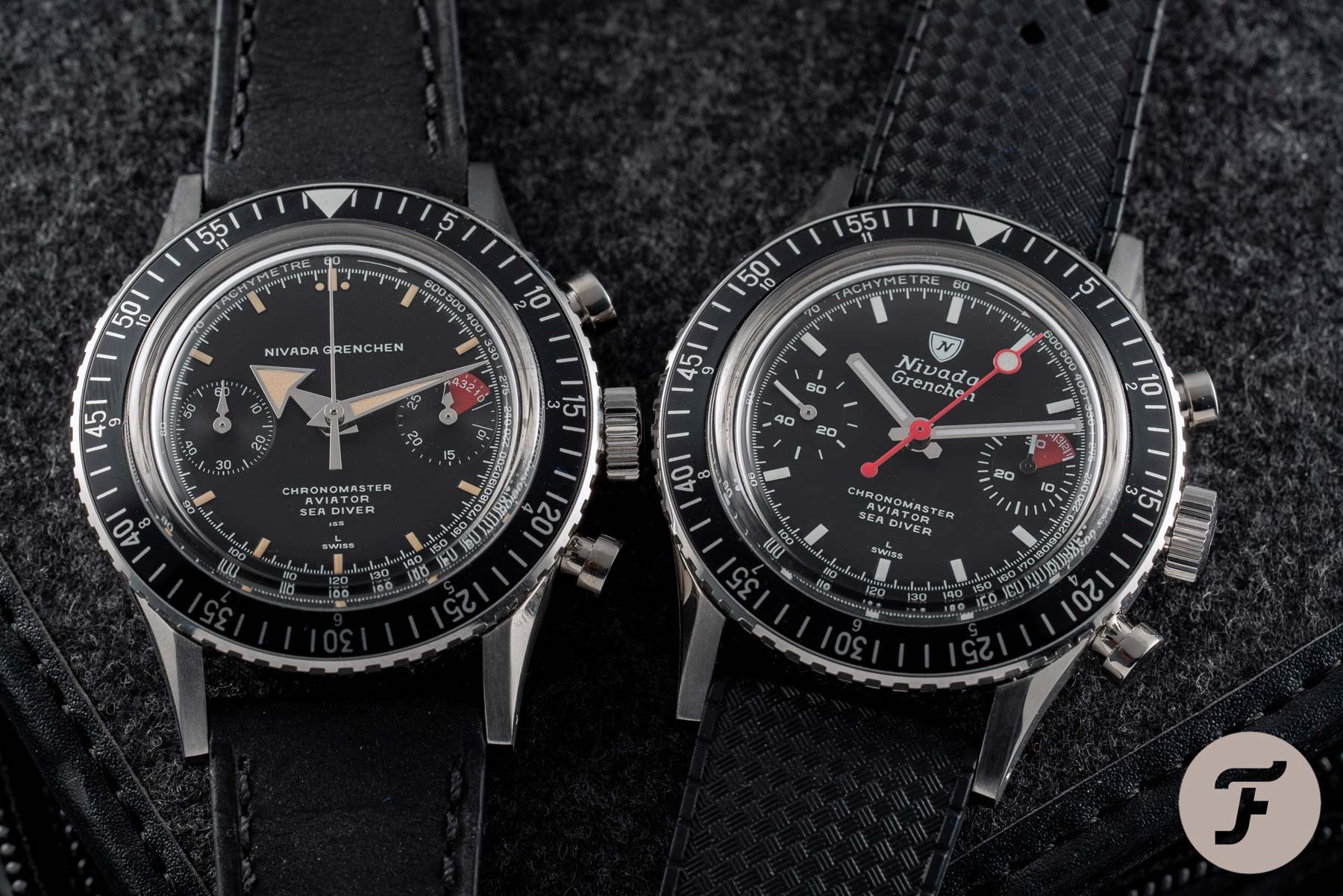A Brief History Of Time: Nivada Grenchen’s Complete Brand History
It’s no secret that within recent years, interest in vintage watches has absolutely boomed. Not only have truly vintage pieces been selling for higher and higher prices, but for the latter half of the 2010s and now going into the 2020s, brands reaching back into their annals, pulling out historically important timepieces, and reproducing them has proved to be a winning business strategy.
With this ever-surging interest in the wristwear of yesteryear, several brands have reemerged in the collective consciousness of the watch community at large, attracting both the newly-acquainted and long-time fans alike. Nivada Grenchen is one of these. Whether you’re familiar with the brand and would like a refresher, or you’re just hearing the name for the first time, never fear. In this next installment of “A Brief History Of Time,” we ‘ll give you the rundown on exactly what made the brand great in it’s heyday, and examine its most recent history to catch a glimpse of the bright future we believe Nivada Grenchen has in store for itself.
Although some sources date the very beginnings of the Nivada Grenchen brand back to a small family-owned watchmaking workshop in 1879, what we know for sure is that in 1926, the brand began operating under the name Wülliman Schneider Nivada S.A. Established in Grenchen, Switzerland, home at the time to other well-known companies like Eterna and Fortis, Nivada never set out to be the most luxurious of manufactures. In fact, Nivada never intended to be a “manufacture” at all. Instead, the brand utilized reliable mechanical movements from makers like Ebauches SA, ETA, Phénix, and A. Schild to deliver reliable, accurate timekeeping at an accessible price. While priced reasonably, early watches from the brand nevertheless exuded class and elegance, thanks to svelte design and arc deco styling cues.
The 1930s
In the 1930s, Nivada’s dress watches were available in a plethora of different styles, including round cases with artfully-shaped lugs and rectangular, tank style cases. Their watches gradually increased in popularity, and in 1939, Nivada struck up a business deal with the New York-based Croton Watch Company to import and distribute Nivada watches within the US. This partnership would last for decades, and because of this, many watches produced by Nivada Grenchen and sold in the US were branded as Croton Nivada, Croton Nivada Grenchen, or simply just Croton.
The 1940s and ‘50s saw Nivada Grenchen’s popularity continue to rise, particularly after World War II. Models such as the Buccaneer came in several styles, but all featured manually-wound movements with small seconds at the six o’clock position. The Alert, a mid-’50s release featuring the newly developed A. Schild 1475 caliber and stunning, fancy lugs, brought a wrist alarm to the brand’s lineup. The Discus became known as the brand’s slimline model, marketed for its “flat, thin elegance.”
A dynamic brand
Although early on, it mainly featured a manually-wound movement, the industry-wide trend toward automatic movements was not lost on the brand, and the Discus later featured a self-winding caliber with center seconds. In those days, Nivada was quick to adopt new industry standards (often indicating this with the word “Compensamatic”) and became one of the first brands to market automatic watches on a large scale.
With models such as the Sea Blade and Aquamatic, Nivada continued to further its reputation for the water resistance of its timepieces.
The “waterproof” capabilities of newer watches were also becoming increasingly important to consumers. Though today, we refer to watches as “water-resistant,” at that time, “waterproof” had a much more powerful marketing punch, and Nivada adopted the terminology in short order while making the brand’s cases more water-tight. With models such as the Sea Blade and Aquamatic, Nivada continued to further its reputation for the water resistance of its timepieces.
The Aquamatic
The Aquamatic’s capabilities were what was needed to propel Nivada Grenchen into its next phase of success. Inspired by the scientific exploration of the most extreme climates on Earth, Nivada, using the Aquamatic platform as a base, produced the Antarctic. These watches, marketed as “waterproof, self-winding, shock resistant anti-magnetic,” with an “unbreakable mainspring and balance staff,” were given to the US Navy team lead by Admiral Robert Byrd, and accompanied them on their Operation Deep Freeze expedition to the South Pole from 1955 and 1956.
Today, the Antarctic is considered the first of Nivada Grenchen’s signature models.
It was there that they faced the most extreme conditions, and according to Nivada, “never lost a second.” Pairing rugged functionality with a versatile stainless steel case, dauphine hands, art deco numerals at the three, six, nine, and 12 positions, and multifaceted hour markers, the watch was equally as stylish as it was capable and went on to be a massive success for the brand. Today, the Antarctic is considered the first of Nivada Grenchen’s signature models.
The Wanderer
The 1960s would prove to be the most successful period for the brand. Early in the decade, Nivada added to its alarm watch offerings, and released the Wanderer wrist alarm (reviewed in detail by Fratello’s own Tomas here). Clearly meant for jet-setting travelers, this stylish and extremely functional piece featured a versatile silver dial with baton hour markers, lumed dauphine hour and minute hands, a red or silver alarm hand (the latter option available with black or purple arrow tips), a slim 36mm case with 12-hour bezel in silver or black, and the laudable Vulcain Cricket 120 caliber inside. To follow this model up, the brand then used the success it had seen with its water-resistant timepieces to inspire their next big hit, the Chronomaster.
The Chronomaster
Released in 1963, the Chronomaster Aviator Sea Diver was Nivada’s do-it-all offering, and the model that would become truly the most iconic for the brand. Suitable in any demanding situation from the land, to the air, to the sea, the model had literally almost anything a professional would need. With a manually wound Valjoux chronograph movement as its heart, the dial featured a tachymeter for measuring speed, a bi-compax layout with small seconds at nine, and a chronograph minute totalizer at three o’clock. This subdial could be used to count up to 30 minutes of elapsed time, or, with its purposeful red highlights, count down the last five minutes before an event, such as a regatta.
This theme of multi-functionality was carried through to the bidirectional rotating bezel, which featured not only a fully-graduated 60-minute timing scale, but also a 12-hour scale to track a different time zone. On top of its useful features for racers and pilots, the watch was also extremely capable for divers, with its 38mm case providing 200m of water resistance. In addition, the release of the Chronomaster was most certainly timely. In the 1960s, chronograph popularity was booming, and exports of Swiss chronographs to European countries alone nearly quadrupled from 52,000 in 1964 to over 197,000 in 1969. The Chronomaster, with its do-it-all functionality and chronograph cool factor, was a runaway hit for Nivada Grenchen. The watch would be a mainstay of the brand’s catalog through the 1970s, seeing various external and internal updates along the way.
Depthomatic takes the lead
The Chronomaster, however, was not the only successful release from Nivada in the 1960s, but rather, the first in a series of three purpose-built releases which would cement the brand’s legacy and endear it to vintage watch lovers to this day. In 1964, Nivada followed up on the Chronomaster’s success with the release of the Depthomatic. Also water resistant to 200m, as the name implies, the Depthomatic was truly a watch for divers, and was the first watch on the market to feature a depth gauge. This worked by means of a glass tube around the circumference of the dial, which, upon a diver’s descent, would react to increasing pressure by slowly filling with red-tinted water.
Tracked by indicators on the dial in the earliest releases and on an external bezel in subsequent versions, the watch was released in both single-crown and dual-crown super compressor cases respectively. The super compressor case allowed for even more functionality, as the second crown served to operate an additional inner rotating 60-minute bezel. Available in a range of case sizes and powered by various automatic ETA calibers, there was a Depthomatic for almost any aesthetic sense.
The Depthmaster lands
The final addition to the brand’s most famous trio was the 1965 Depthmaster. Further proving the brand’s dedication to seriously capable timepieces, the Depthmaster featured a 38mm case, water resistant to an astonishing 1000m. This seemingly unfathomable 546.8-fathom rating was indeed way more than fifty, and the watch was marketed as “probably the world’s most waterproof watch.” For perspective, the Rolex Sea-Dweller would not surpass the Depthmaster’s water resistant capabilities until 13 years later with the 1,220m water-resistant reference 16660.
The Nivada Grenchen Depthmaster’s 38mm cushion case was fashioned from a single block of Swedish steel, particularly renowned for its hardness and lack of impurities, and the 60-minute rotating bezel featured a “permanent lubricating system” and “indelible markers.” Although it would make for a better story to use a Nivada-exclusive case, the “Baby Panerai” case was, in fact, used by several other brands such as Sandoz, Le Phare, Orient, and even Lecoultre, some of which may have even been in production before the Depthmaster. That did not change the fact, however, that Nivada’s release was still among the most capable of divers on the market.
Like the Depthomatic, the Depthmaster lineup utilized automatic ETA movements both with and without date function, and featured two very distinct dial styles. The first, with oversized Arabic numerals for even hours and stick markers for odd, and the second, potentially more memorable “Pac-Man dial.” As the Pac-Man video game itself was not released until 1980, this nickname was not given to this dial until several years later. Nevertheless, this dial style featured uniquely-styled 12, 3, 6, and 9 numerals, the latter two of which bear an amusing resemblance to the famous character.
Travelmaster
Following the introduction of quartz-powered Seiko Astron in 1969, however, the infamous quartz crisis began to cripple the Swiss watch industry in the 1970s, leading many brands’ sales to slowly erode or even cease to exist all together. Nivada, however, did manage to at least make it through the decade on the back of prior hits and a few noteworthy, collectible models. The Travelmaster (reviewed by Tomas here), which followed up on the success of past Alert and Wanderer models, featured a mechanical alarm movement, this time, in the form of the A. Schild caliber 1568.
Improving on the functionality of the Wanderer by providing both a date function and a rotating 24-city GMT bezel, the Travelmaster was available in both traditional round cases and a rarer Submarine World Time version with a bullet-shaped case. This case style would also be used in other models, such as a 43mm model with “Pepsi” GMT bezel and manually-wound Valjoux 724 chronograph caliber and the Chronoking diver’s chronograph.
Datomaster
The Datomaster, a 36mm bi-compax chronograph featuring a manually-wound Landeron 187 caliber (and yet another Fratello favorite, reviewed by Michael here), screamed, “1970s!” with its gray and white color scheme, orange chronograph seconds hand, and orange 5-minute countdown scale and orange 45 on the minute totalizer. Its 12 o’clock date window, while unconventional, helped maintain the dial’s symmetry while still providing useful function. The Ultramatic 36000, which ticked away at its namesake five-hertz frequency, was a noteworthy oddity with its completely elliptical case and uncommon ETA 2734 caliber. Lastly, the fashion-forward Leonardo da Vinci lines featured automatic movements with date function and flamboyant, colorful sunburst dials in a variety of round, square, and even octagonal cases.
Despite these attempts to keep the mechanical watch relevant – and even a brief early-’80s foray into quartz movements – Nivada’s profits continued to plunge as quartz strengthened its stranglehold on the market. By the mid-1980s, the company was simply no longer able to sustain itself, and was sold to the South Korean Kim Suk Keun Watch Company. As I am unable to find any photos of watches from this the time, whether or not the brand gained any traction in South Korea is questionable. By the early 2000s, Nivada was again sold, this time to Mexican business firm Industrial Omega SA de CV.
Nivada Swiss
Registering the company in Mexico as Nivada Swiss, the firm set about reinventing the brand for the Mexican domestic market. Still operating to this day, the MDM version of Nivada is an aspirational brand, never hesitating to reference its esteemed Swiss heritage, and furthering its public appeal with ambassadors such as renowned footballer Oscar “El Conejo” Perez and actress Lorena Rojas. Today, the brand produces mostly quartz-powered watches. Available in a multitude of collections with names like Rockefeller, Diplomat, Skymaster, Moonmaster, and Millionaire, the brand’s watches range in price from 130 to 935 Euros.
The revival
In 2018, however, two men, aware of the originalbrand’s ever-growing vintage cult following, sought to revive Nivada Grenchen in its homeland of Switzerland. The first, Guillaume Laidet, a French entrepreneur and founder of the brand William L. 1985, has staked his claim in the watch industry by designing and producing vintage-inspired models with automatic movements at an affordable price. The second, Remi Chabrat, has made a name for himself as CEO of the 22-year-old Montrichard Group, a parts supplier and watch manufacturing firm specializing in the efficient production of watches for small brands and private labels.
Realizing that a business relationship with the owners of the Nivada Swiss brand in Mexico already existed, Chabrat and the Montrichard Group were able to purchase the licensing use of not only the Nivada Grenchen name, but its back-catalog of successful models no longer produced by Nivada Swiss. Thus, Laidet and Chabrat set out to give the collectors exactly what they were asking for, and successfully relaunched Nivada Grenchen with the 2020 release of three of its most historically iconic pieces: the Chronomaster, Depthmaster, and Antarctic.
Past charm returns
Committed to recreating these brand icons as faithfully as possible by only updating what is absolutely necessary, Laidet and Chabrat have made sure that all of the past charm of these three models has been successfully realized in the modern day. As their forebears were, all models are Swiss made, and their vintage case sizes, shapes, angles, and polishing patterns remain. Dial configurations and colors are both as spot on and varied as one could wish for, representing the stylistic evolution of each of the models over their original production runs.
Customers are spoiled for choice with a variety of straps and two period-inspired “beads of rice” and rivet-style “oyster” bracelets available. The latter option even includes expandable links for extreme comfort in warmer wearing conditions, a vintage-esque feature equally welcomed in our current era of easily-adjustable modern bracelets. Modern improvements on the designs are both logical and practical, including the use of sapphire crystals instead of acrylic and modern Sellita automatic and manually-wound movements, rather than out-of-production ETA and Valjoux calibers. We here at Fratello have been able to get hands on with both the reissued Chronomaster and Depthmaster, so if you’d like to check them out in even more detail, click here and here.
What’s next?
At time of writing, the watch community’s reactions to these faithful reissues has been overwhelmingly positive. The desire for vintage designs with the perks of modern engineering is very palpable, and as such, Laidet has said that the new Nivada Grenchen will focus strictly on vintage re-editions. He has indicated that there is demand not only for the three models already released, but also for the Datomaster and Chronoking. If the formula that has worked thus far continues to do so, Nivada Grenchen will have no problem staying relevant in today’s market, especially at its current sub-2,000-Euro price point. We here at Fratello will be very interested to see what classic models from the company’s back-catalog will reemerge, and we will be sure to bring you all the latest news on this rejuvenated brand. For more information, check out Nivada Grenchen’s website here.

